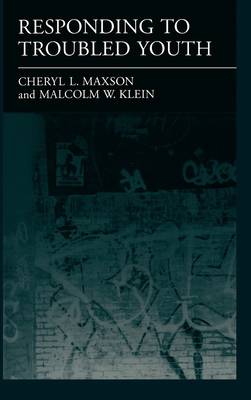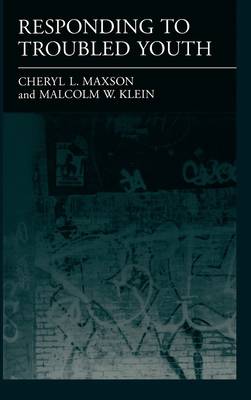
- Afhalen na 1 uur in een winkel met voorraad
- Gratis thuislevering in België vanaf € 30
- Ruim aanbod met 7 miljoen producten
- Afhalen na 1 uur in een winkel met voorraad
- Gratis thuislevering in België vanaf € 30
- Ruim aanbod met 7 miljoen producten
Zoeken
Omschrijving
This book provides an overview of the dominant philosophical approaches and practices in handling status offenders--those children who habitually resist the control of their parents and schools, who run away from home, who drink and stay out after curfew. The three basic and competing social philosophies in responding to these troubled and troublesome youths--discussed at length in this book--are known as the treatment, deterrence, and normalization rationales. In examining these philosophies, the authors consider the quality and quantity of response to and for status offenders at local community service outlets in seven different cities. In this way, Maxson and Klein are able to determine whether such response practices conform with the ideological thrusts embedded in state legislation.
The results will surprise many legislative and youth service policy professionals. Agency characteristics, service-delivery patterns, and youth clients do indeed reflect the treatment, deterrence, and normalization rationales, but in ways that have little bearing on the dominant philosophies embodied by state legislation.
Special chapters are devoted to those minors most likely to slip through the safety-net of youth service --chronic runaways and street kids. The authors discuss the implications of their findings for lawmakers and policy developers.
The results will surprise many legislative and youth service policy professionals. Agency characteristics, service-delivery patterns, and youth clients do indeed reflect the treatment, deterrence, and normalization rationales, but in ways that have little bearing on the dominant philosophies embodied by state legislation.
Special chapters are devoted to those minors most likely to slip through the safety-net of youth service --chronic runaways and street kids. The authors discuss the implications of their findings for lawmakers and policy developers.
Specificaties
Betrokkenen
- Auteur(s):
- Uitgeverij:
Inhoud
- Aantal bladzijden:
- 224
- Taal:
- Engels
- Reeks:
Eigenschappen
- Productcode (EAN):
- 9780195098532
- Verschijningsdatum:
- 12/06/1997
- Uitvoering:
- Hardcover
- Formaat:
- Genaaid
- Afmetingen:
- 164 mm x 243 mm
- Gewicht:
- 517 g

Alleen bij Standaard Boekhandel
+ 162 punten op je klantenkaart van Standaard Boekhandel
Beoordelingen
We publiceren alleen reviews die voldoen aan de voorwaarden voor reviews. Bekijk onze voorwaarden voor reviews.








